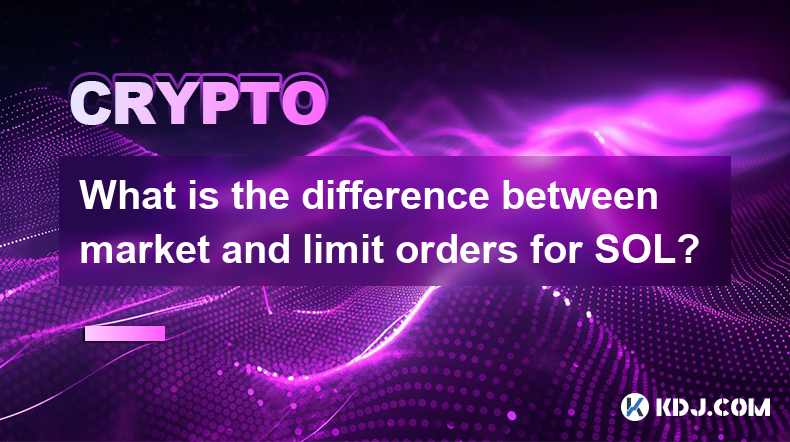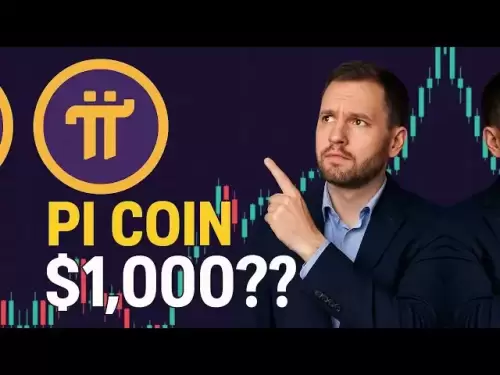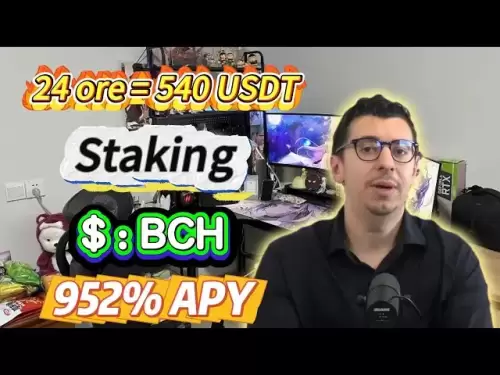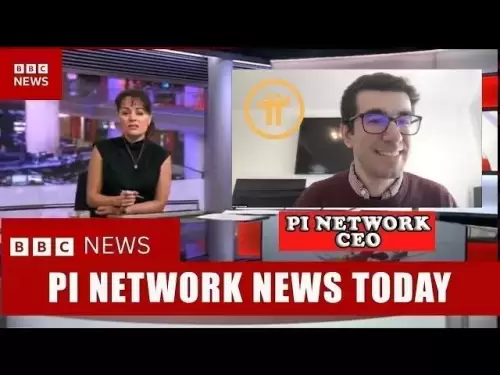-
 Bitcoin
Bitcoin $108,703.4836
0.45% -
 Ethereum
Ethereum $2,576.6839
1.58% -
 Tether USDt
Tether USDt $1.0001
0.00% -
 XRP
XRP $2.2924
-0.87% -
 BNB
BNB $660.2136
0.01% -
 Solana
Solana $151.4729
-0.29% -
 USDC
USDC $1.0000
0.00% -
 TRON
TRON $0.2866
0.04% -
 Dogecoin
Dogecoin $0.1698
0.82% -
 Cardano
Cardano $0.5831
0.13% -
 Hyperliquid
Hyperliquid $37.9814
-3.97% -
 Bitcoin Cash
Bitcoin Cash $503.9489
1.93% -
 Sui
Sui $2.8994
0.74% -
 Chainlink
Chainlink $13.5429
0.38% -
 UNUS SED LEO
UNUS SED LEO $9.0693
-0.19% -
 Stellar
Stellar $0.2524
0.15% -
 Avalanche
Avalanche $18.1959
1.02% -
 Shiba Inu
Shiba Inu $0.0...01180
1.48% -
 Toncoin
Toncoin $2.7601
-0.76% -
 Hedera
Hedera $0.1606
0.96% -
 Litecoin
Litecoin $86.6105
0.26% -
 Monero
Monero $315.7691
-0.56% -
 Polkadot
Polkadot $3.3911
0.25% -
 Dai
Dai $1.0001
0.03% -
 Ethena USDe
Ethena USDe $1.0002
0.02% -
 Bitget Token
Bitget Token $4.3076
-0.05% -
 Uniswap
Uniswap $7.5901
3.66% -
 Aave
Aave $288.0954
0.35% -
 Pepe
Pepe $0.0...01002
1.64% -
 Pi
Pi $0.4578
0.09%
What is the difference between market and limit orders for SOL?
When trading Solana (SOL), use market orders for quick execution at current prices, and limit orders for price control, though they may not always fill.
Apr 19, 2025 at 12:00 am

When trading Solana (SOL), understanding the difference between market and limit orders is crucial for effective trading. Market orders and limit orders serve different purposes and can impact your trading strategy significantly. Let's delve into the specifics of each type of order and explore how they apply to trading SOL.
What is a Market Order?
A market order is an order to buy or sell SOL at the current market price. When you place a market order, you are essentially saying that you want the trade to be executed immediately at the best available price. This type of order is useful when you need to enter or exit a position quickly.
- Execution Speed: Market orders are executed almost instantly, making them ideal for traders who prioritize speed over price.
- Price Uncertainty: The main drawback of market orders is that you have no control over the exact price at which the order will be filled. In highly volatile markets, the price can move rapidly, potentially resulting in a less favorable execution price than expected.
- Slippage: Slippage occurs when the price at which your order is filled differs from the price you saw when you placed the order. This is more common in less liquid markets or during periods of high volatility.
What is a Limit Order?
A limit order, on the other hand, allows you to specify the price at which you want to buy or sell SOL. This type of order will only be executed if the market reaches your specified price or better. Limit orders give you more control over the price at which your trade is executed, but they do not guarantee that the order will be filled.
- Price Control: With a limit order, you set the maximum price you are willing to pay when buying SOL or the minimum price you are willing to accept when selling. This helps you avoid buying too high or selling too low.
- Execution Uncertainty: The trade-off for this control is that there is no guarantee your order will be filled. If the market does not reach your specified price, your order may remain unfilled.
- Partial Fills: In some cases, a limit order may be partially filled if there is not enough volume at your specified price to complete the entire order.
How to Place a Market Order for SOL
Placing a market order for SOL is straightforward and can be done on most cryptocurrency exchanges. Here's how you can do it:
- Log into your exchange account: Ensure you are logged into your preferred cryptocurrency exchange that supports SOL trading.
- Navigate to the SOL trading pair: Find the trading pair that involves SOL, such as SOL/USDT or SOL/BTC.
- Select the market order option: On the trading interface, choose the option to place a market order.
- Enter the amount: Specify the amount of SOL you want to buy or sell.
- Review and confirm: Double-check the details of your order, then confirm to execute the market order.
How to Place a Limit Order for SOL
Placing a limit order for SOL requires a bit more attention to detail, but it can be equally straightforward. Here's how you can do it:
- Log into your exchange account: Ensure you are logged into your preferred cryptocurrency exchange that supports SOL trading.
- Navigate to the SOL trading pair: Find the trading pair that involves SOL, such as SOL/USDT or SOL/BTC.
- Select the limit order option: On the trading interface, choose the option to place a limit order.
- Set the price: Enter the price at which you want to buy or sell SOL.
- Enter the amount: Specify the amount of SOL you want to buy or sell.
- Review and confirm: Double-check the details of your order, then confirm to place the limit order.
Choosing Between Market and Limit Orders for SOL
When deciding between a market and a limit order for SOL, consider your trading goals and the current market conditions.
- For Immediate Execution: If you need to enter or exit a position quickly, a market order is the better choice. This is particularly useful during times of high market volatility when you want to ensure your order is filled.
- For Price Control: If you are more concerned about getting a specific price, a limit order is more suitable. This is ideal for traders who are willing to wait for the market to reach their desired price.
- For Large Orders: If you are trading a large volume of SOL, a limit order can help minimize the impact on the market price. By breaking up the order into smaller chunks and using limit orders, you can potentially get a better average price.
Practical Examples of Market and Limit Orders for SOL
To illustrate the difference between market and limit orders, let's look at some practical examples.
- Example of a Market Order: Suppose the current market price of SOL is $150. You place a market order to buy 1 SOL. Your order is filled immediately at $150, but due to market volatility, the actual fill price might be slightly different, such as $150.50.
- Example of a Limit Order: Suppose you want to buy SOL but only at a price of $145 or lower. You place a limit order to buy 1 SOL at $145. If the market price drops to $145 or lower, your order will be filled at that price. If the market price never reaches $145, your order will remain unfilled.
Frequently Asked Questions
Q: Can I cancel a limit order if it hasn't been filled yet?
A: Yes, you can cancel a limit order at any time before it is filled. Most exchanges allow you to manage your open orders and cancel them if needed.
Q: What happens if I place a limit order to sell SOL at a price higher than the current market price?
A: If you place a limit order to sell SOL at a price higher than the current market price, your order will only be filled if the market price rises to meet or exceed your specified price. Until then, your order will remain on the order book.
Q: Are there any fees associated with market and limit orders?
A: Yes, most exchanges charge fees for both market and limit orders. The fee structure can vary between exchanges, so it's important to check the specific fees before trading.
Q: Can I use both market and limit orders in the same trading strategy?
A: Absolutely, many traders use a combination of market and limit orders to achieve their trading goals. For example, you might use a market order to enter a position quickly and then use limit orders to manage your exit strategy at specific price levels.
Disclaimer:info@kdj.com
The information provided is not trading advice. kdj.com does not assume any responsibility for any investments made based on the information provided in this article. Cryptocurrencies are highly volatile and it is highly recommended that you invest with caution after thorough research!
If you believe that the content used on this website infringes your copyright, please contact us immediately (info@kdj.com) and we will delete it promptly.
- Onyxcoin (XCN) vs. Solana (SOL): A Promising Bet in the Crypto Game?
- 2025-07-09 00:30:12
- CoreWeave's Bold Bet: How AI is Reshaping Bitcoin Mining
- 2025-07-09 00:30:12
- Coinbase (COIN) IPO Flashback: Is the Rally Overextended or Just Getting Started?
- 2025-07-08 22:50:12
- Bitcoin Price, Elon Musk, and BTCBULL: A Bullish Trifecta?
- 2025-07-09 00:10:12
- Toonie Trouble: Spotting Fakes Like an Expert
- 2025-07-08 22:50:12
- Coinbase, Crypto Stocks, and Ozak AI: Riding the Web3 Wave in Style
- 2025-07-08 23:10:14
Related knowledge

How to customize USDT TRC20 mining fees? Flexible adjustment tutorial
Jun 13,2025 at 01:42am
<h3>Understanding USDT TRC20 Mining Fees</h3><p>Mining fees on the TRON (TRC20) network are essential for processing transactions. U...

USDT TRC20 transaction is stuck? Solution summary
Jun 14,2025 at 11:15pm
<h3>Understanding USDT TRC20 Transactions</h3><p>When users mention that a USDT TRC20 transaction is stuck, they typically refer to ...

How to cancel USDT TRC20 unconfirmed transactions? Operation guide
Jun 13,2025 at 11:01pm
<h3>Understanding USDT TRC20 Unconfirmed Transactions</h3><p>When dealing with USDT TRC20 transactions, it’s crucial to understand w...

How to check USDT TRC20 balance? Introduction to multiple query methods
Jun 21,2025 at 02:42am
<h3>Understanding USDT TRC20 and Its Importance</h3><p>USDT (Tether) is one of the most widely used stablecoins in the cryptocurrenc...

What to do if USDT TRC20 transfers are congested? Speed up trading skills
Jun 13,2025 at 09:56am
<h3>Understanding USDT TRC20 Transfer Congestion</h3><p>When transferring USDT TRC20, users may occasionally experience delays or co...

The relationship between USDT TRC20 and TRON chain: technical background analysis
Jun 12,2025 at 01:28pm
<h3>What is USDT TRC20?</h3><p>USDT TRC20 refers to the Tether (USDT) token issued on the TRON blockchain using the TRC-20 standard....

How to customize USDT TRC20 mining fees? Flexible adjustment tutorial
Jun 13,2025 at 01:42am
<h3>Understanding USDT TRC20 Mining Fees</h3><p>Mining fees on the TRON (TRC20) network are essential for processing transactions. U...

USDT TRC20 transaction is stuck? Solution summary
Jun 14,2025 at 11:15pm
<h3>Understanding USDT TRC20 Transactions</h3><p>When users mention that a USDT TRC20 transaction is stuck, they typically refer to ...

How to cancel USDT TRC20 unconfirmed transactions? Operation guide
Jun 13,2025 at 11:01pm
<h3>Understanding USDT TRC20 Unconfirmed Transactions</h3><p>When dealing with USDT TRC20 transactions, it’s crucial to understand w...

How to check USDT TRC20 balance? Introduction to multiple query methods
Jun 21,2025 at 02:42am
<h3>Understanding USDT TRC20 and Its Importance</h3><p>USDT (Tether) is one of the most widely used stablecoins in the cryptocurrenc...

What to do if USDT TRC20 transfers are congested? Speed up trading skills
Jun 13,2025 at 09:56am
<h3>Understanding USDT TRC20 Transfer Congestion</h3><p>When transferring USDT TRC20, users may occasionally experience delays or co...

The relationship between USDT TRC20 and TRON chain: technical background analysis
Jun 12,2025 at 01:28pm
<h3>What is USDT TRC20?</h3><p>USDT TRC20 refers to the Tether (USDT) token issued on the TRON blockchain using the TRC-20 standard....
See all articles

























































































